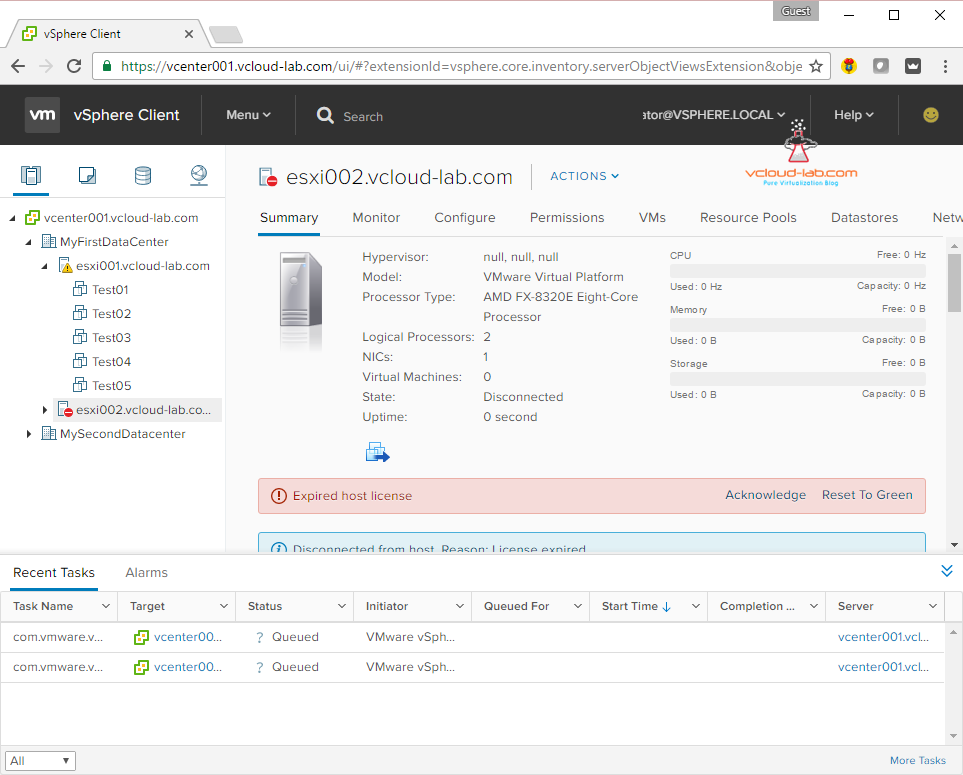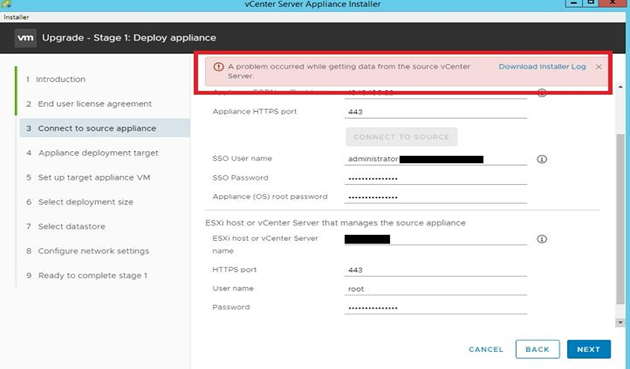

Some kind of addition to Admission Control in a way. Once this threshold is reached, you will not be able to power on any more virtual machines. The new CPU over-commitment setting allows you to set a maximum value in percent for this ratio at the cluster level of up to 500% (5:1). For instance if you have 10 VMs with 4 vCPUs each running on a 10 core CPU, the ratio will be 4:1 (4 to 1), or 400%. When sizing hosts or troubleshooting CPU performance issues, one of the first things to look at is the sum of the number of virtual CPU (virtual cores of a VM) provisioned on a host compared to the number of physical core available on the host (Hyper Threading excluded). This feature walkthrough will explain each option and intended behavior.
#Vcenter 6.5 drs options manual
Note that you should not enable this setting if you over-commit the memory as you may run into serious memory contention issues. In vSphere 6.5, with VMware vCenter Server® working together with VMware vRealize® Operations (vROps), DRS can act upon predicted future changes in workloads. VMware Distributed Resource Scheduler (DRS) with vSphere 6.5 includes three new additional UI options that had been previously had to be configured using manual settings. The “DRS active memory paradox” as I call it (just came up with it).

It will save you from having VMs, with large amount of data cached in RAM but not touched in the sampling interval, to be moved to a host with less memory available resulting in memory contention. That percentage depends on your migration. As a result, DRS performs load-balancing operations if the difference between the lowest-utilized host and the highest-utilized host is a certain percentage. However, if like many customers you prefer the safe side and provision less memory than available on the host, you would be better off using the consumed memory (pretty much the allocated memory) for a better distribution of the provisioned memory across the hosts. Pairwise balancing was introduced by vSphere 6.5 and is focused on keeping the host resource utilization disparity within a certain threshold. Using this metric is fine, especially if you over-commit the memory. This setting will be a great addition to customers that are juggling between Migration Threshold and failure domain size.ĭRS has always used the misunderstood Active Memory metric which uses a sampling mechanism to estimate and reports the amount of memory pages that have been touched in a time interval (More info here). Note that DRS will always prioritize resource allocation to VM distribution. VMware implemented a parameter that will make DRS spread the virtual machines evenly across the hosts. One server could wear out quicker than others and failure domains would be greater. If these 15 VMs are getting the resources they need, DRS will not vMotion any VM to the available capacity in the cluster. Select vSphere DRS on the left and check the Turn ON vSphere DRS checkbox: 3. Select your cluster from the inventory, go to Manage > Settings > vSphere DRS, and click the Edit button on the right: 2. Author: Vikas Shitole Website: Product: vCenter server/vSphere DRS rules. API Explorer Samples Developer Support Options Contact Us. describe various advanced Storage Distributed Resource Scheduler (DRS) options. Here are the steps to enable DRS on a cluster using vSphere Web Client: 1. vSphere python SDK DRS rules DRS Pyvmomi.

Imagine a cluster where there are 15 VMs on one ESXi host and 0 on the other ones. VMware vSphere 6.5 provides dynamic load balancing using DRS clusters. The purpose of DRS has always been to ensure that virtual machines are entitled the resources they need. You will find these options in Cluster > Configure > vSphere DRS. Additional settings in context to VM distribution, Memory metric for load balancing & CPU over commitment.
#Vcenter 6.5 drs options upgrade
If there are distributed virtual switches of versions older than v.6.5 that are managed by your vCenter Server before upgrade, you have to upgrade the distributed virtual switches to v.6.5 or later. These options are very interesting but it is easy to miss them due to old habits of configuring a cluster. VMware vCenter 7.0 can be deployed only as vCenter Server Appliance (VCSA) that is a virtual machine running on an ESXi host. Back then when vSphere 6.5 was released, a bunch of new options were introduced in the DRS configuration page.


 0 kommentar(er)
0 kommentar(er)
